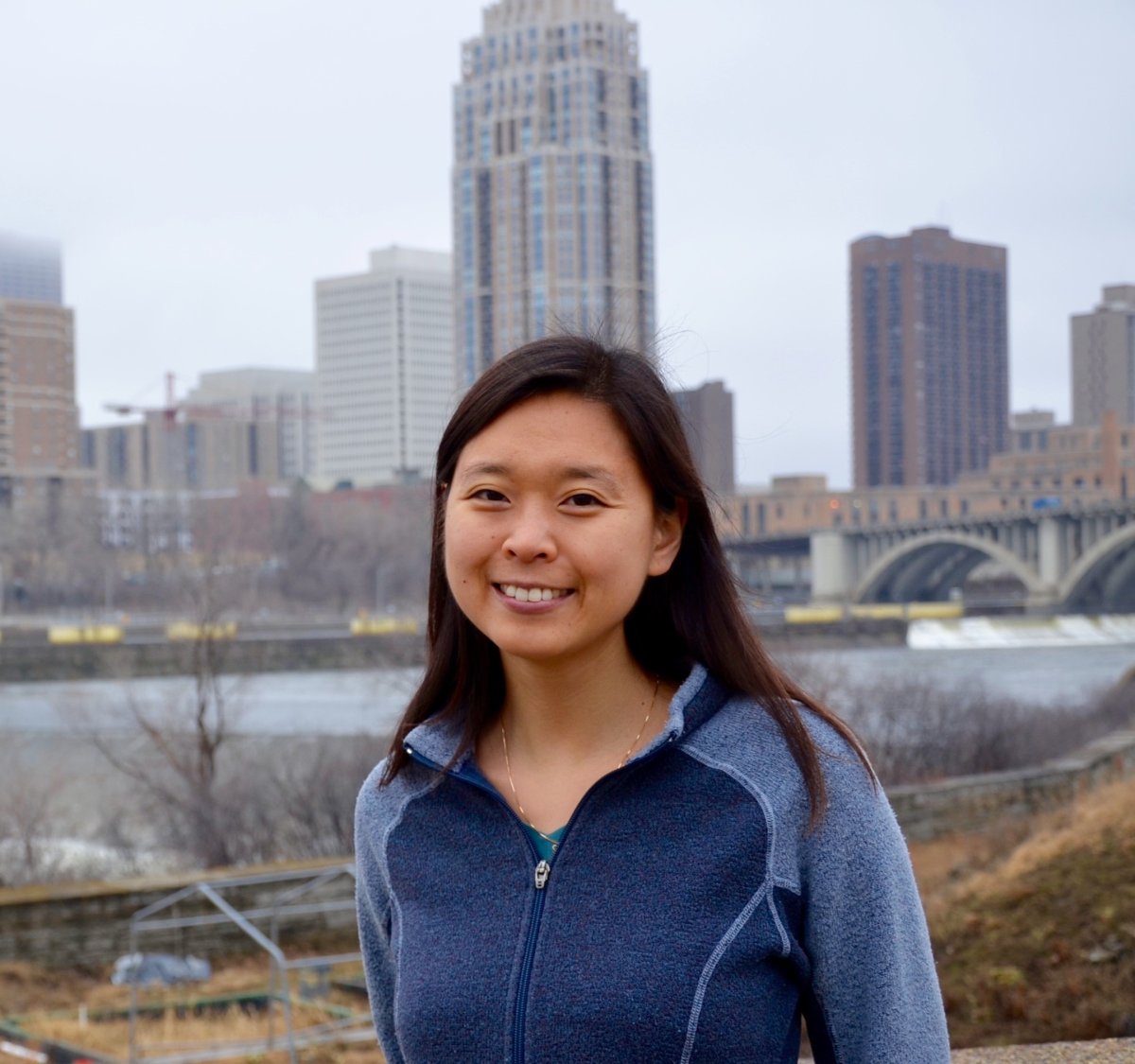SAFL Welcomes New Earth Science Faculty Crystal Ng

The St. Anthony Falls Laboratory (SAFL) is excited to welcome Dr. Crystal Ng, Assistant Professor of Earth Sciences, as the newest addition to our faculty group.
Ng grew up in Portland, Maine, and throughout her early life gravitated to mathematics, science and engineering. She received her BA in Applied Mathematics from Harvard University in 2003, where she reveled in being able to explore several different science topics and applications without having to major in one particular scientific field.
In moving to graduate school, Ng elected to pursue a PhD in Civil and Environmental Engineering at the Massachusetts Institute of Technology (MIT). Hydrology was her main research focus and interest, inspired through a previous experience of living as an exchange student for one year in a semi-arid region of Bolivia in Latin America. “It was my first time living in a water-stressed area, and it definitely instilled in me a strong feeling of wanting to do something to help society,” she said.
Working under co-advisors Dara Entekhabi and Dennis McLaughlin, Ng’s dissertation research focused on probabilistic estimation of groundwater recharge in semi-arid environments. She used existing chloride tracer data from the Southern High Plains, which overlies the southernmost section of the Ogallala aquifer, one of the world’s largest aquifers that underlays portions of eight U.S. states. Agricultural fields and practices have largely replaced native grasslands, and her research looked to estimate groundwater recharges rates under current land use practices. Her results demonstrated that recharge rates were generally greater in agricultural fields and areas, as the native vegetation has evolved to take up much more water than shallow-rooted, immature crop plants.
After completing her dissertation in 2009, Ng was awarded a two-year Mendelhall Postdoctoral Research Fellowship from the U.S. Geological Survey (USGS) for her research proposal on ecohydrological modeling in the Mojave Desert. Working from the USGS in Menlo Park, CA, she looked at how vegetation and soil moisture respond to rainfall variability in an arid environment. Desert environments are considered to be at great risk from climate change, as they are already on the edge of ecological feasibility and could be the ideal environment to understand early indicators of climate change and subsequent ecological impacts. As part of the project, she developed a new data assimilation approach for statistically merging field data with model simulations. Her findings showed that the common desert shrub creosote responds to seasonal to multi-year rainfall amounts, highlighting that ecological vulnerability will depend on more than just predicted changes in average annual rainfall.
Ng continued to work an additional two years for the USGS in Menlo Park after the completion of her fellowship, expanding her expertise to include reactive-transport modeling, which includes modeling the fate and transport of minerals, chemicals and contaminants in groundwater. She implemented reactive-transport models to evaluate “secondary water quality impacts,” which are those triggered while the primary contaminant of concern degrades. Using data from an oil spill site near Bemidji, MN and from a former wastewater disposal site on Cape Cod, she found that secondary plumes such as those of iron and methane form due to the properties of organic carbon, minerals, and gas phases.
In 2014, Ng was excited to accept a position as an Assistant Professor in the Department of Earth Sciences at the University of Minnesota. She has already hit the ground running, securing several grants that involve either or both of her research interests in ecohydrology and reactive-transport modeling. She currently is wrapping up a project co-funded by the University of Minnesota Water Resources Center and the USGS that looked at wild rice resilience in streams impacted by high sulfate concentrations in St. Louis County, Minnesota. The results of the study suggest that the regional groundwater system may help ‘buffer’ the impact of high sulfate concentrations in the streams with strong groundwater upwelling, decreasing the risk to wild rice growth.
She also has an upcoming grant with the Legislative-Citizen Commission on Minnesota Resources (LCCMR) that looks to develop an assessment tool for understanding vegetation growth impacts on groundwater recharge. Harkening back to her dissertation and postdoctoral research in ecohydrology and applied mathematics background, this will involve mining existing data sets (i.e., remotely sensed data, geologic maps, precipitation records, observation well records, etc.) and developing statistical methods to merge those data with models to better quantify the impacts of vegetation on groundwater recharge. “Plants are the gatekeepers of infiltration and recharge potential,” she stated, “and this type of project, which looks to connect surface to subsurface processes requires data to constrain the full range of those processes and their associated uncertainties.”
In joining the faculty group at the SAFL, Ng is looking forward to collaborating further with the SAFL Computational Fluid Dynamics team as well as utilize experimental facilities like the Outdoor StreamLab. “Just being in a community of very computationally oriented researchers who are always ready to talk about ideas is very exciting – I’m looking forward to starting a lot of conversations and collaborations at SAFL.”
